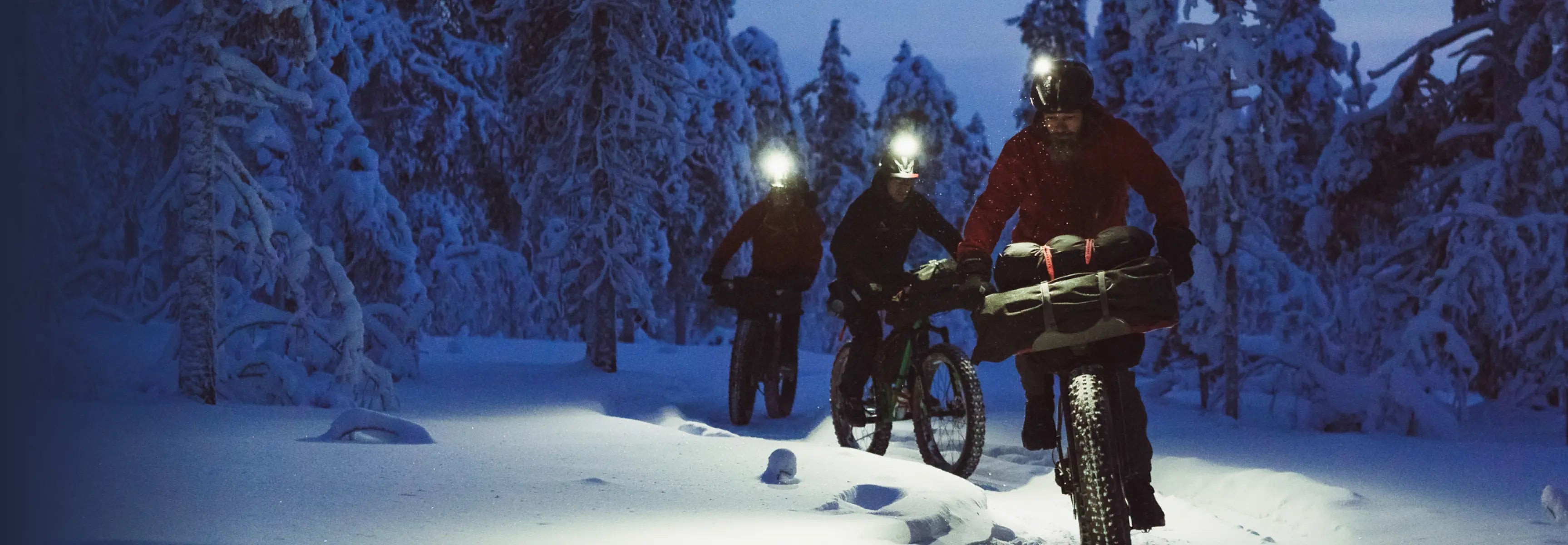
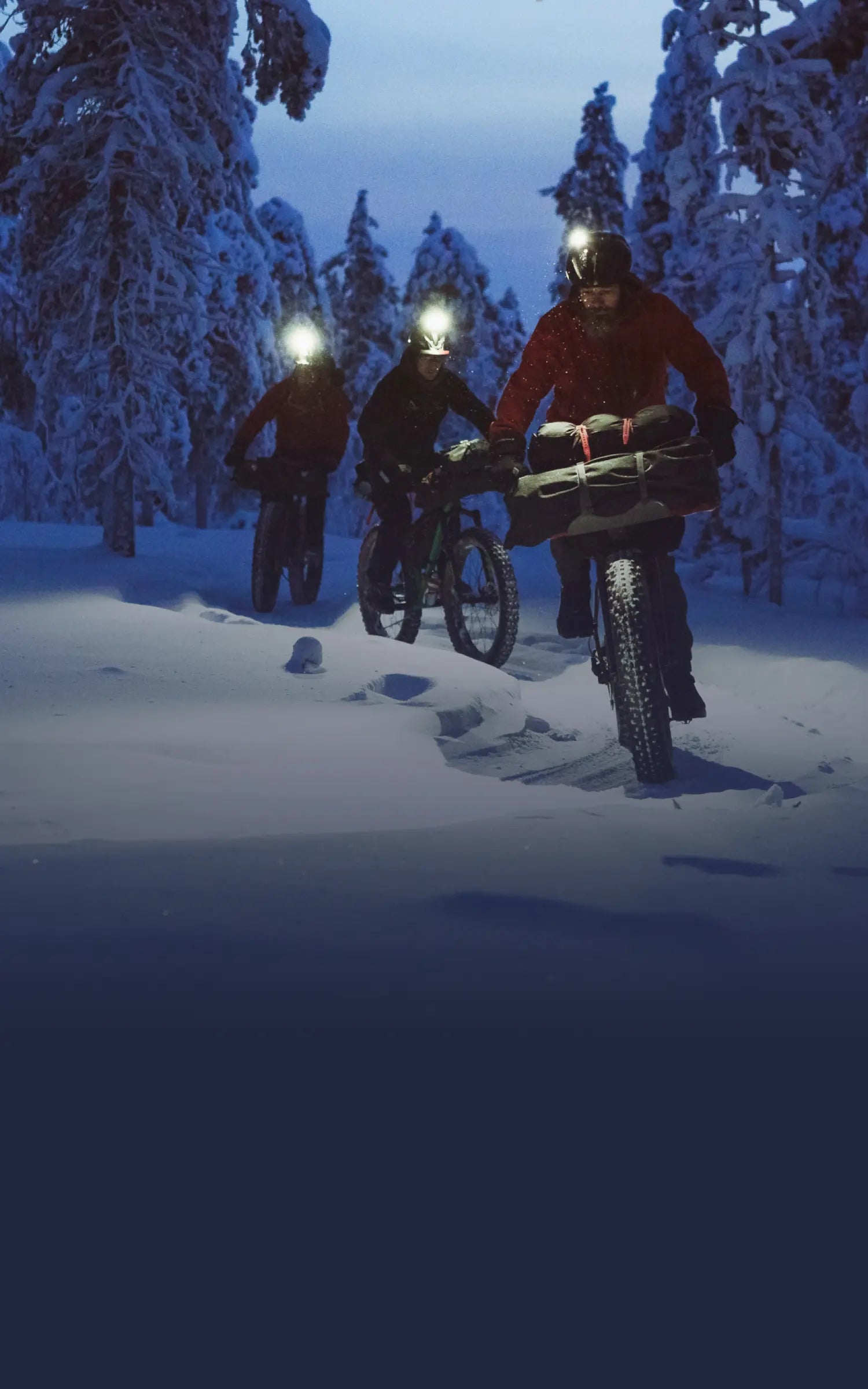
SUUNTOブログ
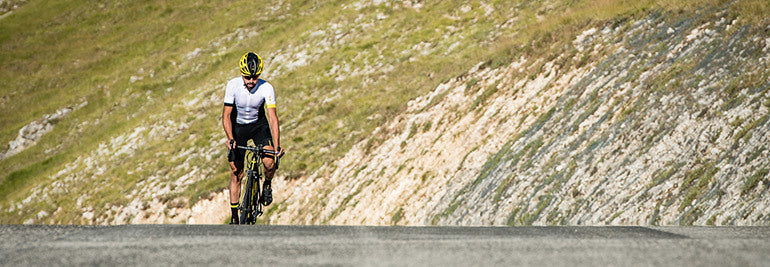
How to ride the Giro d’Italia in the hardest way possible
Any serious cyclist knows that the Tour de France isn’t necessarily the best bike race on the planet, just the most well-known. Those in the know would are that the Giro d’Italia – aka just ‘The Giro’ is harder, steeper, and in a more beautiful location. And guess what? 2017 is the event’s hundredth birthday.
As such, it’s natural that Italian long-distance endurance cyclist Omar di Felice wants to take it on, in a unique way never done before, for his new project #ITALYUNLIMITED3500. He’ll do a variation of the route, starting and ending in Rome. He won’t follow the exact route (it changes every year). But what’s impressive? The race normally takes place over three weeks. He aims to do it in just 9 days, starting Wednesday, September 20th. Sleep? That will come mostly in 40-minute power naps, approximately every ten hours.
3500km with almost 60,000m of climbing. Here’s how he’ll do it, section by section.
Part 1: Rome to Calexia
Distance:1073.2km
Vertical: 17346m
Omar will start in classic style: at the Olympic Stadium in Rome. The climbs begin quick – he’ll have his first 1000m climb within the first 100k. Says Omar: "The biggest challenge in the south part of Italy will be road conditions: there won’t be flat parts but a continuous up and down and the asphalt isn’t so good. So the first 1000km will be very tough!” His first push will be his longest – he’ll try to go 30 hours before taking his first nap.
Part 2: Sicily
Distance: 380.8km
Vertical: 6329m
After getting on to Sicily, Omar will rack up 380km on the way to Palermo. With one big climb (and we do mean big – over 1800m!) it will be challenging.
Part 3: Sardinia
Distance: 283.6km
Vertical: 3039m
After Siciliy, Sardinia will be a breeze – 100km less distance and half the climbing.
Part 4: The Alps and back to Rome
Distance: 2075.5km
Vertical: 31556m
Now the battle begins – already exhausted of mind and body, Omar will take 2075km of rolling hills and high mountain passes – including one mega climb that will take him up nearly 3,000m, all the way from sea level. Highlights include many of the most famous parts of the Giro d’Italia.
Just to put this all in perspective, let’s look at another record in cycling. RAAM (Race across America) record holder Christoph Strasser completed the approximately 4,800km course in seven days and fifteen hours. Faster than Omar intends to finish – but that longer course had only 36,500 height meters, compared to di Felice’s upcoming 58,270. While it’s tough to compare the two, there’s no question the steeper and more frequent climbs are a huge part of what makes this upcoming ride so difficult. Bad weather and lack of sleep are likely to be some of biggest factors, Omar has faced such challenges before – but this is another level.
“This ride is simply “different”. A nonstop ride is toughest in terms of mental effort and because you can’t sleep too much. During the winter ride, instead, you have to consider a tough weather and slippery road conditions. But, at the end, I really love both the nonstop rides and the winter rides!”
Where he stops every night will be up to his body. "It’s impossible to set a real plan because it will depends on my physical conditions and weather but, for sure, I predict to stop the first time after 30 hours of ride, then to have a 40 minutes powernap every 10 hours of ride,” says Omar. He’ll consume about 500kcal/hr, so fueling is going to be important!
How will he do? We highly suggest following him on Instagram to get the highlights of his ride – no matter what happens when he starts pedaling, you have to admire him for even dreaming up such a ride. Good luck, Omar!
All images © Luigi Sestili
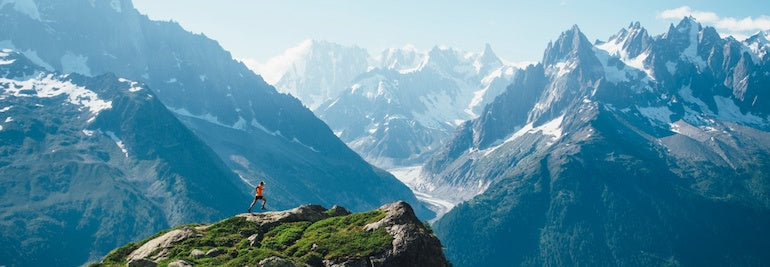
Ryan Sandes achieved his dream. How? He worked (and raced) smart
It was Ryan's third attempt at the legendary race in California, but after getting blown off the line by upstart Jim Walmsley, Sandes’ persistent pace put him on track to grab first place. Now that he’s had eight weeks to recover, run a few more fun ones, and start thinking about next year, we caught up to learn what we could – though we highly recommend watching the video below to hear some of Ryan’s story in his own words.
Sandes went faster by slowing down. (Image by Kelvin Trautman, Red Bull Content Pool)What was different this year? In some ways – Sandes went faster by slowing down. 2015 was rough – he contracted Glandular Fever, a viral infection known for lingering. He later realized that illness was part of the beginning stages of overtraining. As he began working back in 2016, there was something else: Ryan became Papa Ryan. You don’t need to be a family man yourself to know what kind of toll that takes on serious athletic training. In other words: it was hardly the perfect scenario to make a big push at one of the hardest races in the world. But long ago – back before he’d ever run his first Western States – South African running legend Bruce Fordyce sent Ryan a note, and addressed it: “To a future Western States champion”. Suffice it to say Ryan had a goal. How to approach it? “I did a little less training than before,” says Ryan. “More focused and more specific.” His Suunto Spartan Ultra was an important training partner – running trail, it’s tough to keep track of effort using just distance and time, so elevation gain and loss was one of the most important things he paid attention too. Going into the event, much of the pre-race hype was about upstart Jim Walmsley – who’s enjoyed a meteoric (and boastful) rise to ultra-running elite status. Jim thought he could set a course record in 2016 – and famously made a wrong turn at mile 92. He was back again in 2017. “Heading out on to the course, I asked Jim if he was still going to go for under 14,” says Ryan. “He said, ‘yeah baby!’ and took off. At that point I held back.” Sandes was at one point almost an hour behind Walmsley, ‘running his own race’ as he puts it. But as Sandes kept going through checkpoints, word began to trickle back: Walmsley was slowing down. “I respect him for trying it!” says Ryan. “It takes balls to even make an attempt like that.”
A dream comes true. (Image by Corinna Halloran, Red Bull Content Pool)Then he got reports that Jim had even sat down early in the race. Then Ryan made up 17 minutes over just eight kilometers. At the next station he was right on his heels. Finally, he passed Walmsley, and held on for a win at Western States, the grand-daddy of all ultra-marathons.
Since then he’s had some fun – he took part in the Burro Racing World Championships – and also entered a serious race, the CCC at UTMB weekend in Chamonix. Legs still tired, he finished, but in a disappointing-to-him 21st place – although to anyone in the know, finishing at all is pretty impressive. Up next: a project he doesn’t want to talk too much about – stating only that it’s high altitude and far away – and next year’s big goal: UTMB, a race that’s only been won once by a non-European (and that winner came from Nepal.) Can he win it? He’ll have to train smart again – “I think you really need to spend time in that environment, so you’re used to racing in that environment” – but in ultra-running, the human body itself proves anything is possible. In the meantime? Rest, rest and more rest – because rest works.
Main image © Kelvin Trautman / Red Bull Content Pool
Watch this video about Ryan's Western States 100 experience
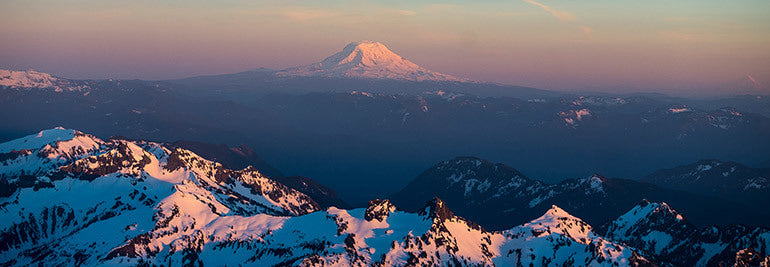
Can an e-Car support an epic ski adventure? 100%.
As a professional adventurer, I constantly search far and wide for new challenges and new spots to explore. My happiness, my inspiration… essentially everything that fulfills me comes from nature. But looking at how I access these adventures, it’s clear: I am killing the world as it stimulates me.
Not only was I well beyond the sustainable level, there was more that the test could not calculate. The heli-guiding, the snowmobile I used for access – these were not added to the thousands of kilometers driven in my F-350, or the multiple intercontinental flights. The truth was obvious: I needed to change my ways.
Immediately I decided to try something suggested by my brother Graham at his TED talk. I became a weekday vegetarian and got my family to join me. (It is amazing to think how much of an impact the global meat industry has!) A simple but very effective change. But for me, with my globe-trotting adventures, I really needed to look into my travel.
So I quit heli-ski guiding, sold my giant diesel truck, let my snowmobile rust and looked at different ways to get to the trailhead.
We are constantly reading about electric vehicles being the future – but I was skeptical. EVs have historically had a limited range – which makes them ideal commuter vehicles for urbanites – but useless for someone where I live.
Revelstoke is a small mountain town, deep in the Canadian mountains, 250–400km from major cities. With cold winters and deep snow there are many very valid reasons to be scared of converting to electric. The sacrifices I needed to make seem daunting – but perhaps they are not as big as they seem.
So we had to test it out. My friend Chris Rubens and I went on an electric adventure. Our goal: live our normal adventurous lifestyle while being more sustainable getting from spot to spot.
Chris and Greg on their electric volcano adventure.
I rented a Nissan Leaf from Ecomoto in Vancouver – a commuter vehicle with 100 miles of range. Far from ideal – but if we could drive down the West coast of the USA, climb and ski a bunch of volcanoes and make it back, we could prove to ourselves that electric access is the future.
So first, we met up and climbed and skied Mt Baker, then began our true road trip down south. An app called “Plug and Share” would guide us to all the level 3 chargers, which take around 40 minutes to fully charge the car. This trip was admittedly ideal, since the I-5 corridor that goes south down to Washington, Oregon and into California is littered with these chargers.
It’s not to say we didn’t face challenges. The trailhead for Mt Rainier is quite far inland and well away from any Level 3 chargers. But our app showed us a Level 2 charger that someone had set up at their house for their Tesla. We arrived at the park boundary and started charging at Phil’s personal plug. The percentage slowly moved upwards. We had to hastily leave with barely 70% as the park’s gates were closing. Committed, we drove upwards. As we climbed up to the trailhead our % dropped and dropped. 40%...35% and then finally at 31% we made it. We parked and decided to deal with it when we returned.
Greg charging down a sun-baked volcano.
A great couple of days had us on the 14,400-foot summit and then skiing down a heavily crevassed, but super awesome run. Arriving back at the car we wondered if our first mistake was going to haunt us. Luckily the Leaf has a ‘B” mode which allows the car to slow itself using the engine, putting electricity back into the motor. So as we drove down 5500 feet we brought our charge back up to 50%. A few hours at Phil’s charger and we were off. Yeehaw! Maybe this is going to work!
Mt Hood was our next objective – and there were Level 3 chargers right up to the trailhead. A great summit and silly ski had us driving south. Eventually the ease of charging had us pushing the battery percentage as low as we could go, extending each drive till the % disappeared and the ‘KMs left’ blinked out. We realized there was always extra battery left, and we pushed it many times. Never fully running out of gas – or rather, juice.
Charging, charging... to make it to yet another mountain.
We made it as far south as Mt Shasta in California, where there were less Level 3 chargers and we ended up charging up at RV campgrounds – Level 2 chargers that would take 3-5 hours to fully charge. A couple oddball Canadians, camped amongst the behemoth RVs.
While we drove back north, hitting Mt Adams on the way we pondered our experiment. We ended up traveling almost 5000km, climbed and skied six volcanoes, went rock-climbing five times, had amazing adventures and camped in great places. Essentially: our normal lives, with one major difference. We used one liter of gas during the whole trip: for our cookstove.
Not being able to move quickly between objectives made us more relaxed. Forced stops every few hours had us re-thinking our Type A personalities. To me electric vehicles are the future, especially since climate change would affect our jobs so badly.
My lesson has been learned. Since returning from this trip I have bought an electric Chevrolet Bolt and have fully jumped into the electric vehicle movement. I have dreams of summiting 100 mountains and creating minimal emissions while doing so. It’s a challenge I am calling ‘electric adventures.’ I am 14 summits in, and I have run to some, climbed up others, and skied off those volcanoes. It is a great start and it feels so amazing to be part of the solution to our climate crisis. I will never be perfect – but I can search out ways to be better.
All images © Chris Rubens
Watch "Electric Adventures with Greg Hill and Chris Rubens"now
Press play and follow along on an Electric Adventure
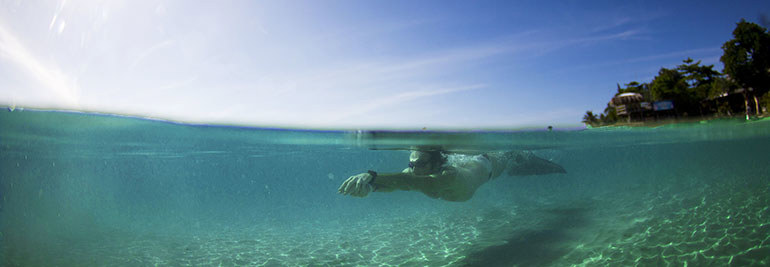
Is the ultimate cross-training… breathing? Mike Maric teaches athletes to breath better
Tell us a bit about your dive history.
I was a free diver and still am a free diver. I was lucky enough to meet the legendary Umberto Pelizzari, and not long after joined his entourage for trainings, travels and world records. I began to free dive professionally myself in the early 2000s, and my career took me to underwater all over the world. But in 2005 tragedy struck when my best friend died during a dive.
What happened next?
After that, I stepped back from competitive diving and began to work more as a trainer and safety diver. I continued my studies in the medical field, and then eventually I began to put my medical competence to use as a free diver.
Tell us more.
I work very specifically with breathing and breathing technique, with the goals of improving performance and reducing recovery times. Essentially, we’re helping athletes increase their oxygen supply, and teaching their muscles to work better without oxygen. We work specifically with the diaphragm to have more oxygen. Then next is to be master of your breath. To be more conscious about have more air.
Mike Maric working with Trek Segafredo pro cycling team (©Trek-Segafredo)
To be more conscious? That sounds like a mind game…
Absolutely. Science shows us it’s not physical, but mental – apnea technique is really important, but we also know mental is really important! My students really learn how to improve the mental conditions and discover new limits inside of themselves!
And now your work includes lots of people who don’t dive and don’t intend to.
Everyone in the world can benefit from better breathing techniques! Over the last few years I’ve been working with many athletes from different disciplines – beginning with triathletes, but now including martial arts masters, fencers, and more. I’ve even helped an oncologist who uses the techniques with his cancer patients.
How do you help a world champion in fencing?
The first goal in fencing or karate is to relax before the performance – reduce the stress and lower the heartbeat. The second is to reduce the recovery time. In fencing, for instance, world Paolo Pizzo is going full-speed for 30 seconds, then rest. During that rest time he moves his shoulders, breathes in a specific way, and recovers very quickly. The first time he did that, a lot of people wondered what he was doing – but it works.
How do you use your Suunto?
The Spartan is an extremely important tool for me – I use it to see breath frequency and heart rate.
Medically educated forensic scientist Mike Maric has taken what he’s learned from free diving and applied it to a multitude of other sports.
How can you help amateur athletes?
There are for sure some simple exercises to be conscious about your breathing. When I ask people ‘how do you breath?’ they don’t know! They know about shoes and running, they know about eating, they know about supplements! But they don’t know how they breath! We need to breath not with the chest, but with the diaphragm! But you need to practice continuously – the basics, about eight minutes each day. That’s enough time to improve over six weeks – although it’s different for each athlete.
No yoga.
Ha! I don’t do yoga. I back up medically sound advice with scientific evidence. Better breathing can improve your mental condition, increase performance, and decrease stress. That’s science!
For more info on Mike Maric's work visit mikemaric.com
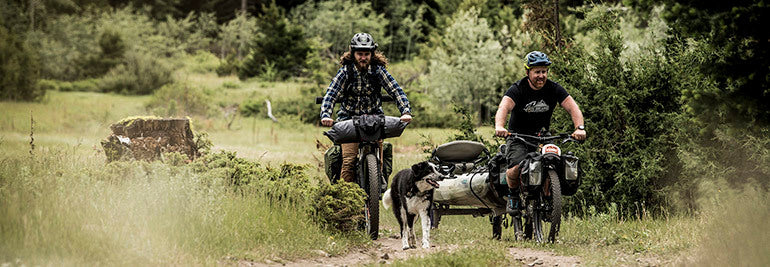
Finding remote
What exactly is it? Well that’s really up to you. For our friends, Kona Gravity team rider Graham Agassiz and Kona Canada’s Matt Stevens, that thing is fly fishing. So, they made a plan, packed up their bikes, and converged in Lytton, British Columbia to head to their own secret stash. Prepped with fishing and camping gear, Suunto Traverse Alpha, Matt’s fishing kayak, and Aggy’s dog Autumn, they headed straight for the goods.
Escape for a moment and watch the video
Learn more about Suunto Traverse Alpha, the GPS/Glonass watch with versatile outdoor functions for fishing and hunting
All images ©Kona Bikes
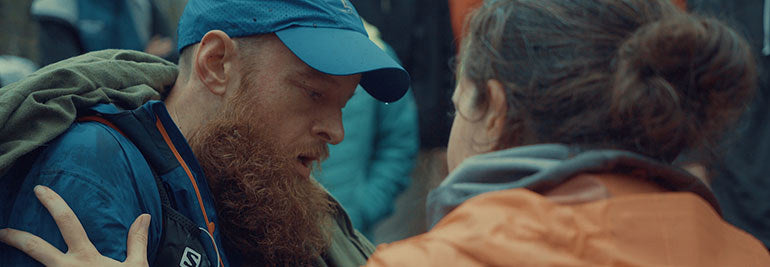
What’s tougher: running the Barkley Marathons… or training for it?
But as we approach the Barkley’s off-season, let’s take a look not at the race – but the training. Soon Robbins will release a short film detailing his Barkley experience – in anticipation, he’s shared a short piece focused on an incredibly difficult full overnight session where the goal was to reach 20,000ft (6,100m) of climbing in around 11 hours. See how his session unfolds – then keep reading for some more insight into his ‘off-season’.
Watch this advanced preview of Where Dreams Go To Die documentary now.
If this video doesn’t make your legs hurt, then this will: Robbins just finished the Nolan’s Fourteeners, fourteen 14,000 peaks in 100 miles, with a 60-hour cut-off time. Less than 20 people have ever completed the route.
A post shared by Gary Robbins (@garyrobbins) on Jul 31, 2017 at 10:24am PDT
"Adventures were had, and we got it done. Nolan's 14 finishers in 56h39m, with the best adventure partner imaginable." –@garyrobbins
We’ve collected some of Gary's thoughts and feelings on the recent adventures, what’s upcoming, and what’s not just worth the time (hint: hypoxic training). Read on.
You didn’t have the easiest time on Nolan’s!
After trudging through fourteen plus hours of fog, wind and rain we found ourselves hypothermic and in a bad state. We actually had some snow flurries on Oxford (8th peak going south to north) and we realized we couldn't safely continue. We made the hard call to drop off the mountain and to call it a day. We skipped Belford (maybe one mile away) because of the state we were in. We dropped about five miles down to a trailhead and had our families and crew meet us there. After warming up and being reminded by my lovely wife that we still had 31 hours left to get this done we made the call to get back in the game. We turned around and headed all the way back up to the saddle we'd dropped off maybe five hours earlier.
Nolan’s Fourteeners are like a Barkley, with less vertical but way more altitude…
Exactly. It’s only been done a handful of times. I’ll be coming straight from sea level into that! But we had access to our support crew – we can check in six or seven times over the course of the traverse.
The altitude is the biggest issue.
Yeah – I live at the coast. But my partner in the coaching business studies this stuff – he says I have to spend 12 hours a day in a hypoxic chamber if I want any benefit from it. No time for that!
You have a few events of your own you’re organizing.
I run a race series back home and I’ve got events before and after the Nolan’s attempt. The biggest is the Squamish 50 – it’s the biggest ultra in Canada, with 1200 participants from 20 countries.
Do you compete in them yourself?
I just don’t have the time. I want to make sure it’s a great event for everyone who comes. I don’t run in the events because I need to run the event – I congratulate every finisher who comes across the line. During the Squamish 50 I’ll get about 8 hours of sleep over three days.
You’re an organizer with some epic terrain close by. Any chance we’ll see a race like the Barkley, in your backyard?
You know, we have the terrain for it – it could rival the Barkley on paper. But it’s damn near impossible to get the permits, and I don’t feel the need to replicate something so unique that Laz has created.
Take us back to your recent adventure on Nolan’s – how did you finish?
It rained for another 10+ hours up high but eventually the weather broke, before it broke us, and we were rewarded with a clear night on our third to last peak (La Plata) and a beautiful sunrise while ascending our second to last peak, the highest point in Colorado, Mt. Elbert at 14,433. I shed a tear on our final peak, Mt. Massive because I really couldn't believe what we'd just accomplished. It wasn't what we'd set out to do time wise, and I'm pretty sure we just completed the least scenic version of Nolan's ever, but the sense of accomplishment that overwhelms me today is the absolute definition of euphoria.
So there’s no question you’re doing Barkley again.
I’m 100% returning for a third attempt in 2018.
Main image and video by The Ginger Runner










































































